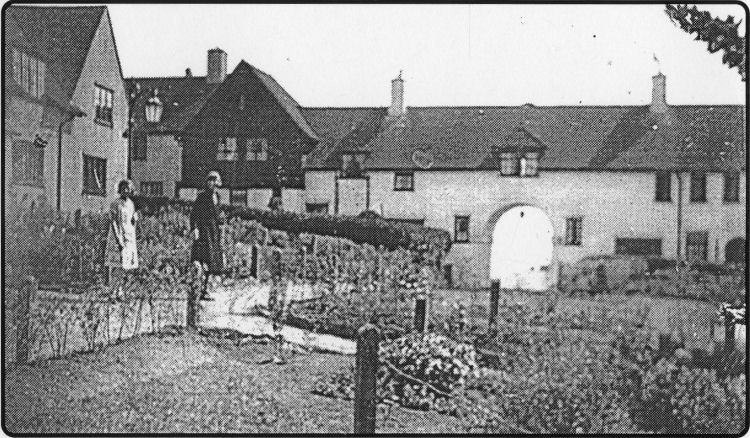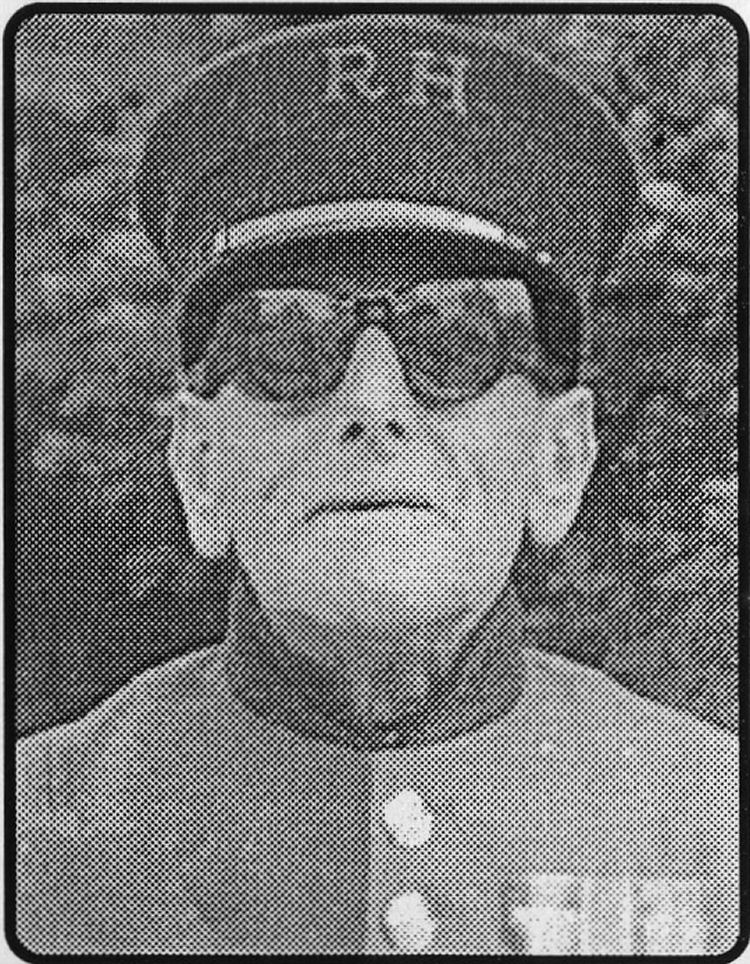
Published 26 June 2003


HERALD reader Caroline Weeks is appealing for help in finding out
something of the history of Park Road, Cheriton, where a good friend of hers
spent the best years of her life as a child, she said.
Another Memories reader, Karan Clayton, is interested in finding out
something about Ash Eton, Radnor Park, where she works as a caretaker.
She says she has been unable to find out much about it, other than that it
is a century old and, before the Second World War, was a school for
gentlemen, later becoming NHS offices.
IT’S NICE to hear that a Herald Memories feature has proved of interest to
people living thousands of miles across the Atlantic, in the United States
or even ‘down under,’ in Australia or New Zealand.
I recently heard by email from Seattle, Washington resident Tracy Hall Bretz,
who lives at 1411 S. 250th Street, Des Moines, WA 98198 USA.
She received details, by email, of my article earlier this month, about
former Folkestone mariner Captain William Stephen Wood, who commanded
sailing ships plying between Folkestone and many European ports.
The article was based on a letter sent to me by Christine Cook, a
great-grand-daughter of the sea captain. She lives in Foreland Avenue,
Folkestone.
Christine told me Capt Wood had married Elizabeth Ann Wood (nee Hall) and
her grandmother Mabel Florence Wood, was his sixth and youngest child. She
was born at The Stade.
Tracy Hall Bretz said the article was of great interest to her because the
Halls, (hence her middle name) were Folkestone members of her family.
“I have some letters and family details written by Mr Wood to my family
here, and Elizabeth Ann was a witness to the marriage of my great-great
grandparents, Cecil Begent and Mary Ann Hall, in 1881.
“I have copies of correspondence, pictures and a few obituaries into the
1930s, then all contact appears to have been lost.
“I have been trying to locate relatives still living in the area for a
couple of years now, to no avail.”
Much of the information gleaned in her research may be read on her web site:
http://freepages.genealogy.rootsweb.eom/~ tbretz / while her email address
is tracy_hb@ho tmail .com Reader Mrs Christine Cook sent me this photograph,
right, of her grandmother Mabel Hopper (nee Wood) and mother Eileen Hopper,
taken in the garden at The Durlocks, in June 1933, when Eileen was 13.
She told me the Durlocks homes were built through the influence of the
Sassoon family for local fisher folk.
Before the Second World War, she said, her late grandparents rented No. 26
The Durlocks, while Sheila Elsey’s family, the Hintons, were at No. 19 - the
house with a street lamp, on the left of the photo.
Referring to tenancy restrictions Chris says that in the early days at The
Durlocks residents had to observe strict rules, and approval was needed, for
instance, before any internal decorations or changes were carried out, even
a basic thing like putting up a humble kitchen shelf!
There were Best Kept Garden competitions and her grandad Harry Hopper won
this twice and was invited to Lympne
Castle to be congratulated by Sir Philip Sassoon MP.
Chelsea pensioner
Mrs Pam Dray, of Archer Road, Folkestone, sent me a copy of a photograph of
a Chelsea pensioner from Folkestone, taken around the 1950s, which was sent
to her by Peter Davies, of Godalming, who used to live in Folkestone.
Peter told her the photograph, right, was taken by his grandfather Mr Walter
Beaney, and he wonders if the pensioner was Lance Corporal Frank Alexander
Taylor (son of Stephen), of 26 Harvey Street who married his mother’s
cousin, Dorothy Beaney, of 15 East Cliff, in 1918 and emigrated to Canada in
the 1920s.
It is possible Frank came back to England after Dorothy died, and became a
Chelsea pensioner.
•I was pleased to hear from Monty Banks, of Capel that his son Trevor, 48
this year, triumphed in his big race in Germany beating the world long-track
champion.
Family hunt
)
 |
Tramway could cost town £20,000 a mile - warning
1 QAQ COUNCILLOR Michell sparked anoth-•Lt/Vder long debate about the
plan for a Folkestone tramway when he urged other members of the town
council to agree with him that only the trolley system, witn overhead
power lines, could ever be a financial success in the town. He suggested
this might cost £7,000 per mile while the alternative, with a conduit in
the road, could cost as much as £20,000 a mile. But fellow councillors
questioned how he arrived at his figures. Alderman Stephen Penfold,
several times mayor of the town and later knighted, led those who
believed overhead power lines would destroy the beauty of the resort and
cause serious injury to Folkestone. Alderman Banks believed a tramway
system would reduce the rateable value of the town from 15 to 25 per
cent. Eventually it was decided by a majority vote to apply for powers
to extend the deadline by which a tramway scheme should be started. A
new cliff lift was being built on the Leas near the Metropole Hotel. The
designer was Reginald Pope, of Folkestone, who was also responsible for
the already existing Folkestone and Sandgate lifts.
|
Coronation celebrations off to colourful start
«■ QCOTHE ARMY not only joined in the >L«730 Coronation celebrations
half a century ago but also commemorated the 150th anniversary of the
forming of a Light: Infantry Regiment at Shorncliffe by General Sir John
Moore, whose military successes at Corunna had been marked by Shepway
with a statue and memorial. General Sir John Harding, Chief of the
Imperial General Staff, laid wreaths at both Shorncliffe and Sandgate
during a week-long programme of events, another distinguished military
officer visiting Folkestone being Field Marshal Lord Wilson of Libya.
One of the photographic highlights; of the district's Coronation
festivities was a Capel-le-Ferne procession, complete with fine Royal
Coronation coach with a large squad of attractive and colourfully
costumed young attendants, which featured on the front page of the
Folkestone Herald. On another page Capel residents were pictured in the
costumes of Henry VIII and his wives in the village's Coronation
procession. Four policemen, including Scotland Yard special branch
officers struggled to restrain a young man with three suitcases aboard
the steamer Cote d'Azur just before it sailed for France. He was due to
face charges.
|
Epic flight to India gets off to a nail-biting local start
*1 QOQTHERE were some anxious moments ^«7^0 as a heavily laden plane,
carrying 450 gallons of fuel, struggled to clear telegraph poles in its
path as it set off from Lympne airfield on an epic flight to India and
back. The gold and light blue coloured Fokker monoplane Princess Xenia,
fitted with a British 400hp Bristol Jupiter engine, arrived at Lympne
from Bristol, flew to Amsterdam for final adjustments and then returned
to Lympne before setting off, piloted by Capt C de Barnard, with relief
pilot Flying Officer E H Alliott, and the Duchess of Bedford, a flying
enthusiast of 62, as a passenger. In his struggle to clear the airfield
boundary and keep airborne the pilot narrowly averted disaster. The
aircraft struck and cut through four telegraph wires as it made its
shaky start on the fong-distance flight, expected to take several days.
The town council decided to honour one of its successful sons by making
him a Freeman of the town. He was Sir William Hall-Jones, born in
Folkestone, who had a distinguished career in New Zealand. Sir William
became a member of the NZ parliament in 1890 and was later in the upper
house. The voting was unanimous.
|
Two million Saga shares go on the open market
^ 07QSAGA Holidays Ltd, of Folkestone, JL«7 / Owas offering for sale
more than two million shares which were priced at 105p each and reported
that more than 6,400 investors had applied to buy them. Herald writer
Robin Young was full of puns as he wrote of an unusual event in
Folkestone: ''Opening the flood gates of Folkestone and District Water
Company to visitors may have brought in a mere trickle, but the guests
who attended bathed in enthusiasm,* he reported, going on to tell of the
great interest shown in the museum-piece steam engines which powered
pumping equipment, working hand in glove with computer-age technology;
Also on show, and kept steaming all day, was the company's Allchin
traction engine, Aquarius; dating from about 1903, which once powered a
farmer's threshing machine, but was used for various purposes by the
water company through the years. The editor criticised councillors' plan
to axe one of Folkestone's major amenities, the outdoor swimming pool on
Marine Parade. "Short-sighted to say the least" he wrote, although he
conceded that not enough people used it to make it pay. It was
eventually reprieved until the end of the season.
|
|



